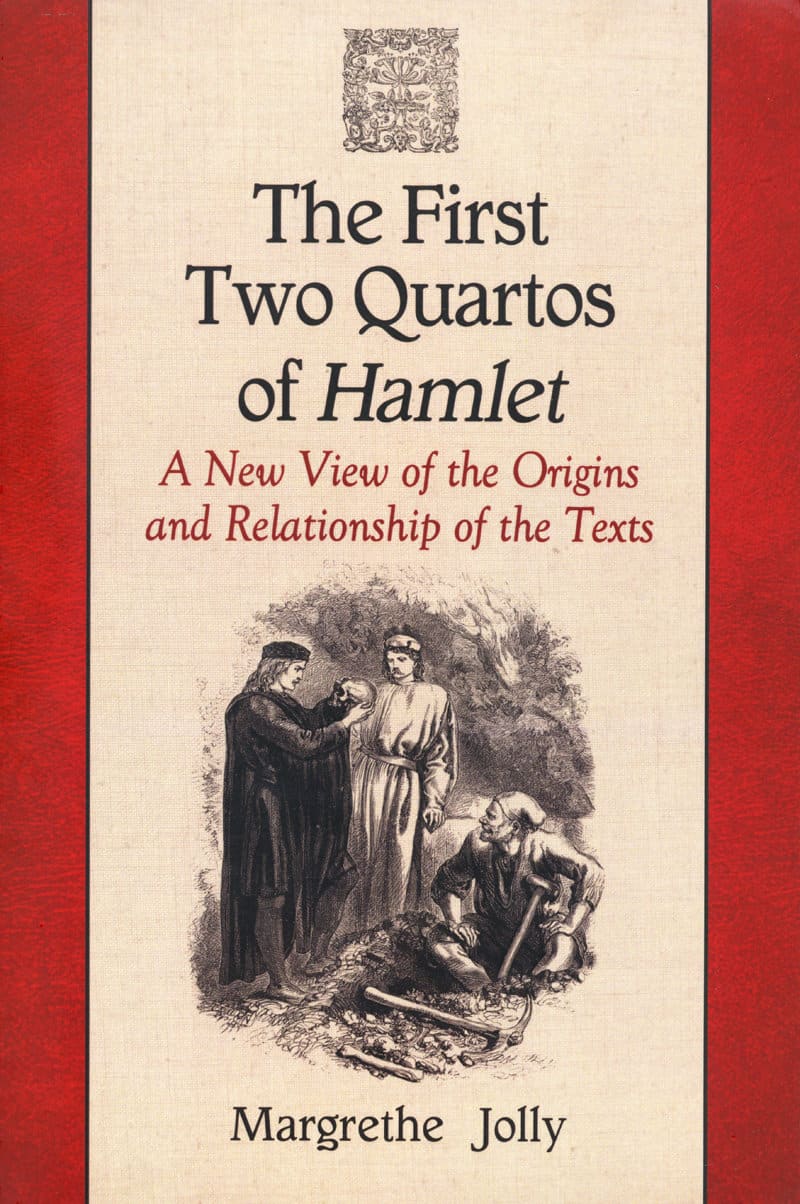Scholar Builds on Her Groundbreaking Studies of Hamlet Quartos

February 3, 2016 — The presentation by Margrethe (“Eddi”) Jolly, Ph.D., “Juliet and the Grafter,” given at the SOF Annual Conference in Ashland, Oregon, on September 25, 2015, is now available here on the SOF YouTube Channel. Other SOF conference videos are available here.
As Dr. Jolly describes her presentation:
“Juliet and the Grafter” reports on part of an investigation into the relationship of the first two quartos of Romeo and Juliet, dated 1597 and 1599 respectively. The popularity of the play hasn’t resulted in as much research upon it as, say, Hamlet, but the two plays have much in common. Tycho Mommsen paired them together in 1857, and since then many scholars have seen the first quarto of each as “bad” or “piratical” and the result of (communal) memorial reconstruction (by actors) (note: Jolly’s book on the Hamlet quartos is available here).
The latter hypothesis has gained a significant number of adherents among the major Shakespearean scholars of the last 150 years. It leads to the belief that Shakespeare’s “genuine” and “authentic” text is the second quarto of Romeo and Juliet and that the first quarto is a “bad,” a “spurious” reconstruction from memory, possibly by the actors who played Romeo and Paris. The idea that the first quarto might be a first draft is rejected firmly by one scholar, who declares that “all those theories which … have contributed to the conception of Shakespeare as an artist much given to the revision of his own past work are quite without evidence or plausibility.”
 A three-way comparison between the underlying French source of Hamlet and the first two quartos of that play provided an external reference point for indications of which quarto came first. This text-based evidence indicates clearly that the first quarto of Hamlet is closer to the source than is the second quarto. It also shows that the first quarto has almost double the echoes of the source than the second quarto. The comparison supports the view held particularly by early reviewers that the first quarto was a “first sketch.” In contrast, the second quarto draws away from the source and from the first quarto. It appears that the second quarto is substantially revised and that the playwright was not afraid of a bit of hard graft to ensure his play achieved the effect he wanted on stage.
A three-way comparison between the underlying French source of Hamlet and the first two quartos of that play provided an external reference point for indications of which quarto came first. This text-based evidence indicates clearly that the first quarto of Hamlet is closer to the source than is the second quarto. It also shows that the first quarto has almost double the echoes of the source than the second quarto. The comparison supports the view held particularly by early reviewers that the first quarto was a “first sketch.” In contrast, the second quarto draws away from the source and from the first quarto. It appears that the second quarto is substantially revised and that the playwright was not afraid of a bit of hard graft to ensure his play achieved the effect he wanted on stage.
What would another three-way comparison show, this time between the first two quartos of Romeo and Juliet and their source, Arthur Brooke’s Tragicall Historye of Romeus and Juliet? Might there be any justification for the note on the title page of the second quarto, “Newly corrected, augmented, and amended”? “Juliet and the Grafter” delves into Brooke’s presentation of Juliet and her transformation in the plays, with a sideways glance at the most memorable images of the play. It also notes that the second quarto isn’t exactly error-free. The paper concludes with considering what these findings suggest about the playwright, his writing habits, and the relationship of the two quartos. Could we see the first quarto as an example of “juvenilia”? And what does this new three-way comparison suggest about the hypothesis of “memorial reconstruction”?[divider]
Margrethe Jolly, Ph.D., a lecturer in English literature and language turned independent researcher, took her first degree at Southampton University and her second at Brunel. She has been exploring issues relating to the Shakespeare canon where there has been scholarly debate, such as the value of Francis Meres’s testimony in Palladis Tamia. Her principal focus has been Hamlet. Her article, “Hamlet and the French Connection,” Parergon 29(1):83–105 (Jan. 2012), and her book, The First Two Quartos of Hamlet: A New View of the Origins and Relationship of the Texts (2014), both resulted from her 2012 doctoral thesis. These texts argue that the original responses to Hamlet, that the first quarto was the anterior text, are right, and that the date of the play needs reconsideration. Her current research is on the hypothesis of memorial reconstruction and the alleged “bad” quartos.
[published Feb. 3, 2016, revised April 2021]


